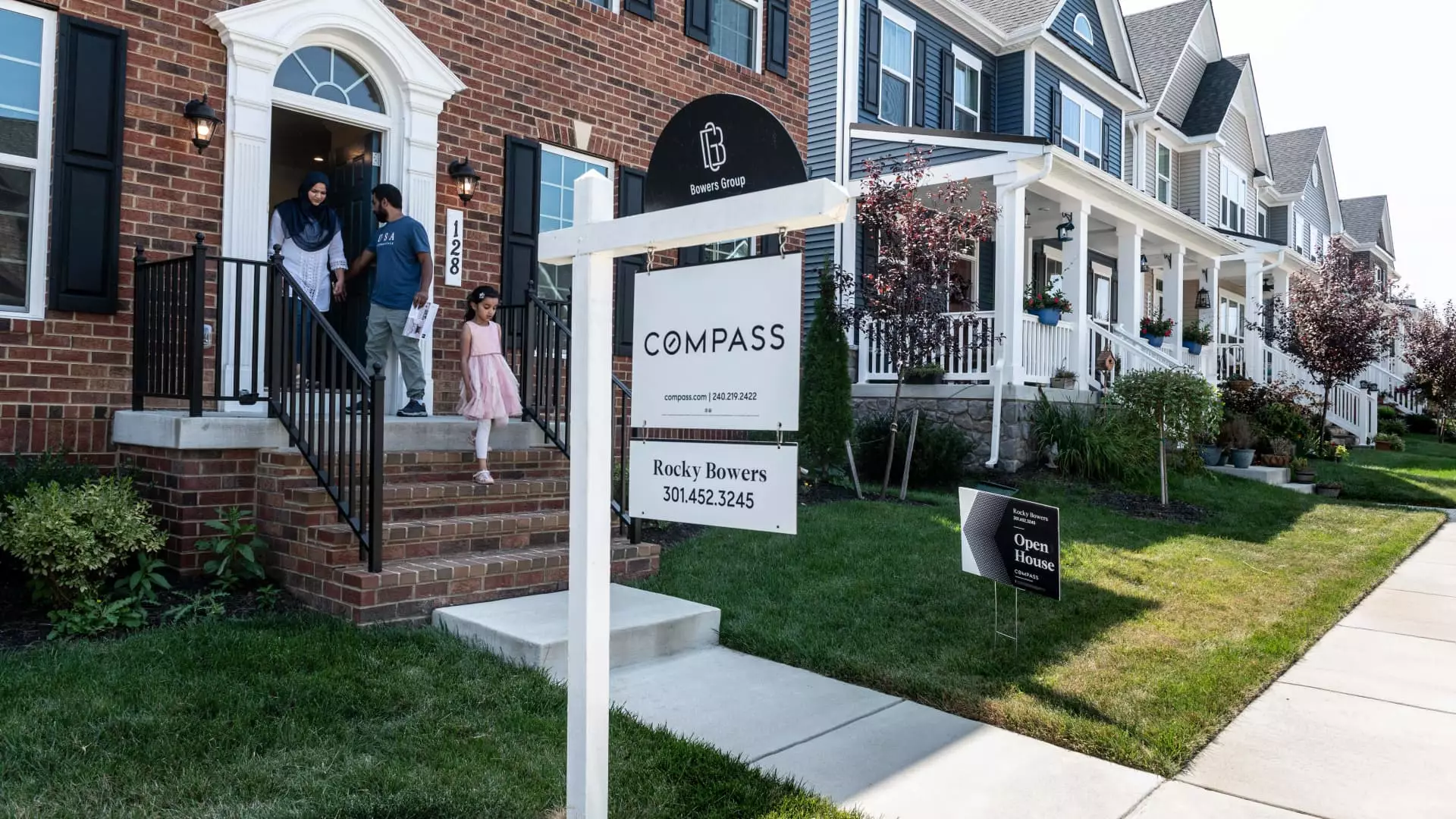The landscape of the U.S. housing market has been under siege for some time now, manifesting health concerns about affordability and supply. The recent imposition of tariffs on building materials has compounded these existing challenges, particularly for prospective homeowners. These tariffs create a ripple effect, contributing significantly to rising construction costs and fostering an environment where owning a home remains a distant dream for many Americans.
At the core of the current housing crisis are the tariffs that have escalated the cost of essential building supplies. Approximately 30% of the softwood lumber consumed in the United States is imported from Canada, while gypsum, a vital ingredient in wallboard, primarily comes from Mexico. The 25% tariff imposed on these imports by then-President Donald Trump drastically inflates the cost of these resources. The situation is exacerbated by the potential delay of tariffs on Mexican goods, yet the uncertainty continues to loom over the construction sector.
Carl Harris, chairman of the National Association of Home Builders (NAHB), highlights the gravity of the situation by noting that over 70% of the imports of essential materials like softwood lumber and gypsum are reliant on Canada and Mexico. Increased tariffs lead directly to heightened construction costs that developers inevitably transfer onto consumers, resulting in escalated home prices. These pricing pressures are even more evident after the staggering 40% increase in home prices since the pandemic’s onset. The latest S&P Corelogic Case-Shiller national home price index reflects a continued increase of 3.8% from the previous year.
This environment intensifies a significant affordability crisis, particularly for first-time homebuyers. Jaret Seiberg, a housing policy analyst with TD Cowen, articulates concerns that the tariffs could further exacerbate the difficulties faced by these buyers. As building materials become pricier, the likelihood of developers constructing affordable housing diminishes, stymying efforts to alleviate the squeeze on those attempting to enter the housing market.
On a potentially positive note, heightened pressure resulting from these tariffs may push Congress to implement policies that foster entry-level construction. The NAHB has called for the exemption of building materials from tariffs, citing Trump’s earlier executive order aimed at expanding housing supply. This call to action underscores the urgency of reassessing tariff policies that directly impact the availability of affordable housing.
Despite attempts to ramp up domestic lumber production, the U.S. remains significantly dependent on imports for building materials. Alarmingly, around 70% of the imports for sawmill and wood products—valued at $8.5 billion—are sourced from Canada, and the majority of gypsum products come from Mexico. The tariffs on these materials, coupled with existing duties, pose a multifaceted challenge to the housing market.
Compounded by the tariffs on Chinese goods introduced recently, the consequences for construction costs could escalate by an estimated $3 billion to $4 billion. Smaller homebuilders, who often operate with tighter profit margins, are particularly vulnerable to these pricing pressures. However, larger developers are not immune to the repercussions, as the elevated costs inevitably manifest in the final price tags for homebuyers.
Alongside financial pressures from tariffs, the housing market is grappling with a critical labor shortage that has only deepened following strict immigration policies. According to the National Immigration Forum, up to 30% of construction workers are immigrants, many of whom are undocumented. The exodus of this workforce poses significant barriers to the construction of new homes. Bruce McNeilage, CEO of Kinloch Partners, aptly summarizes the issue by questioning who will build homes if the workforce is diminished.
Additionally, the escalation in the cost of consumer goods due to tariffs could limit buyers’ disposable income, ultimately impacting their ability to save for down payments. The anticipated decline in interest rates—initially a promise of relief for potential buyers—could conversely reverse trajectory if inflation accelerates as a result of these tariffs.
The current combination of tariffs, rising construction costs, and labor shortages paints a bleak picture for the U.S. housing market. The repercussions are felt across all sectors, dramatically affecting home affordability. As policymakers deliberate on these complex issues, the pressing need for solutions that foster the construction of affordable homes has never been more apparent. Addressing the intertwined effects of tariffs and economic realities is crucial if America hopes to revitalize its housing landscape and provide pathways to homeownership for all citizens.

